 May 20, 2021 John E. Ross, KD8IDJ, Editor
| ||||||
Amateurs' Email Addresses Will Continue to Be Kept Private, FCC Says Starting on June 29, all applications filed with the FCC must include an email address for FCC correspondence. After receipt of the initial announcement that all future applications would require an email address, ARRL was concerned for the privacy of its members and requested that amateurs' email addresses not be made public. This week, the FCC agreed, stating in an email to ARRL counsel that it will The FCC is transitioning to fully electronic correspondence and no longer mails hard-copy licenses. Amateurs are able to view, download, and print their official license grant using the ULS. When a license is first granted, each applicant will receive an email with a direct link to the license. Although the link expires in 30 days, the license itself will remain available in the ULS and may be downloaded at any time by signing into the licensee's account using their FCC Registration Number (FRN) and password. On or after June 29, a valid email address must be provided with each application, and must be kept current by filing a modification application, as necessary. Under the amended Section 97.23, "The email address must be an address where the grantee can receive electronic correspondence. Revocation of the station license or suspension of the operator license may result when correspondence from the FCC is returned as undeliverable because the grantee failed to provide the correct email address." Applicants lacking an email address should consider using the email address of a friend or family member on their FCC applications. Read an expanded version. Spring ARRL Section Manager Election Results Announced In the only contested election this spring, Utah ARRL members elected Pat Malan, N7PAT, as their new Section Manager (SM) for a 2-year term commencing July 1. Malan, of South Jordan, received 419 votes, while incumbent Mel Parkes, NM7P, garnered 339 votes. Parkes had served as Utah Section Manager for 22 years. ARRL Headquarters counted and verified the ballots on May 18.
Six incumbent Section Managers faced no opposition and were declared re-elected, effective July 1: Marty Pittinger, KB3MXM (Maryland-DC); John Bigley, N7UR (Nevada); Bob Buus, W2OD (Northern New Jersey); Bob Beaudet, W1YRC (Rhode Island); John Litz, NZ6Q (San Joaquin Valley), and Dale Durham, W5WI (West Texas). ARRL Podcasts Schedule
The latest edition of Eclectic Tech (Episode 34) features a discussion with Philip Gladstone, N1DQ, the creator of the popular PSKReporter website. The On the Air and Eclectic Tech podcasts are sponsored by Icom. Both podcasts are available on iTunes (iOS) and Stitcher (Android), as well as on Blubrry -- On the Air | Eclectic Tech. Annual WX4NHC On-the-Air Station Test Set for Saturday, May 29 The annual WX4NHC station on-the-air test will be held on Saturday, May 29, 1300 - 2100 UTC. The WX4NHC operators plan to be working remotely again this year as the National Hurricane Center plans to maintain all CDC COVID-19 pandemic protocols until the end of 2021. The yearly exercise takes place just ahead of the official start of the Atlantic Hurricane Season, June 1 - November 30. Assistant WX4NHC Coordinator Julio Ripoll, WD4R, said the event offers an opportunity for radio amateurs worldwide to exercise the sorts of communication capabilities available during severe weather. "We will be making brief contacts on many frequencies and modes, and exchanging signal reports and basic weather data (sunny, rain, Participating stations may use HF, VHF, UHF, APRS, and Winlink, with WX4NHC HF activity centering on the Hurricane Watch Net frequencies of 14.325 MHz and 7.268 MHz, depending on propagation, and will operate elsewhere as conditions dictate. WX4NHC will also participate in the VoIP Hurricane Net, 2000 - 2100 UTC. As for the upcoming hurricane season, Ripoll said, "Even if you are not directly affected by a hurricane situation, please volunteer to monitor and relay reports; just one report can make a difference and help save a life!" In conjunction with the National Hurricane Conference next month, the traditional Amateur Radio Workshop sessions will be held virtually on Tuesday, June 15, 10:30 AM - 12 PM EDT and 1:30 - 5 PM EDT. The sessions will be moderated by Rob Macedo, KD1CY, Director of Operations, VoIP Hurricane Net, with Ripoll. To access the Zoom meeting check-in, use the meeting ID 844 9788 6921, and the passcode 565708. Red Cross Emergency Communications Spring 2021 Drill was a Success The Red Cross Emergency Communications Training Group held its third nationwide drill on Saturday, May 8. While results are still being compiled and checked, it appears that some 800 participating radio amateurs took part in sending traffic via Winlink to one of eight Red Cross Divisional clearinghouses around the nation. The Training Group has two overarching goals: to attract and train a
large number of radio amateurs in the basic use of Winlink and to incrementally raise the bar to higher levels of proficiency. To accomplish this, Winlink Thursday training ops were held all winter. For the May 8 nationwide drill, participants were asked to send two Winlink messages -- a Winlink check-in form providing GPS coordinates of the station, and a message containing a Red Cross Shelter Requisition Form 6409. The valid GPS coordinates were mapped and displayed in real time during the drill. One challenge for the second message was that the sample Form 6409 had been filled in by hand, to provide a more realistic scenario than a neatly typed one. Operators had to transcribe the requisition items. The use of radio to send Winlink messages was encouraged, and more than 80% of participants did so, either on HF or VHF/UHF frequencies. The percentage number and message accuracy rate have continually risen during the Winlink Thursday drills. Because the May 8 date fell on World Red Cross and Red Crescent Day, hams from around the world were invited to participate, and more than 50 checked in from Central and South America, Canada, Germany, and South Africa. For more information about the Red Cross Emergency Communications Training Group, visit the group's website and sign up for its group email service to receive announcements of future activities. -- Thanks to The ARES Letter via the Red Cross Emergency Communications Training Group ARRL Learning Network Webinars Visit the ARRL Learning Network (a members-only benefit) to register, check on upcoming webinars, and to view previously recorded sessions. These Learning Network presentations are sponsored by PreppComm.
Ask the Lab: How ARRL's Technical Information Service Can Help You -- ARRL Laboratory Manager Ed Hare, W1RFI / Tuesday, June 8, at 1 PM EDT (1700 UTC) Learn about the ARRL Technical Information Service (TIS) and the expert ARRL Laboratory staff who answer thousands of questions each year from members. Get tips about projects, suggestions to address various station installations, and help for some of your most Improving Your Club's 2021 Field Day Score -- Paul Bourque, N1SFE, ARRL Contest Program Manager / Thursday, June 10, 8 PM EDT (0000 UTC on Friday, June 11). Learn how your club or group can take advantage of the 2021 ARRL Field Day rules waivers while operating as Class D or E from home. We'll discuss how individuals or groups can boost their scores by earning bonus points, review how to use the Field Day web applet to submit your score, and go over how to attribute your score to your club's aggregate score. This presentation highlights all you need to know to operate as a group for ARRL Field Day 2021. Introduction to Remote HF Operation / Davide Lanfranconi, W6DGE, and Kevin Shin-Wheeler, N7KSW, Cal Poly Amateur Radio Club / Tuesday, June 22, 1 PM EDT (1700 UTC). COVID-19 has triggered a renewed interest in remote operation. Lanfranconi and Shin-Wheeler will discuss the idea, process, and challenges encountered while getting their club's remote HF station on the air, as well as some methods and resources available for those with a similar interest. A Q&A session and live demo are included. ARRL members may register for upcoming presentations and view previously recorded Learning Network webinars. ARRL-affiliated radio clubs may also use the recordings as presentations for club meetings, mentoring new and current hams, and discussing amateur radio topics. The ARRL Learning Network schedule is subject to change. ARRL at Home May 21 - 23 Offering a Weekend of Specials We'll miss seeing you in Dayton for Hamvention again this year, so we put together a Shop book specials, new spring items, Field Day and Solar Cycle 25 gear, and many more surprises. Every order this weekend gets a 2021 ARRL button to add to your collection, and everything ships (within the US) for only $5. Check your email May 21 - 23 for these offers. W1AW, the Maxim Memorial Station at ARRL Headquarters in Connecticut, will also be on the air during the Hamvention QSO Party, Saturday, May 22, from 8 AM to 8 PM Eastern time (1200 - 2359 UTC). Your exchange should include a signal report and the first year you attended Hamvention. If you have never attended Hamvention, send 2021 in place of the year. Visit the Dayton Hamvention website for complete details. ARRL will premiere a video tour of the W1AW antenna farm on Friday, May 21, at 8 PM Eastern / 2359 UTC on the ARRL YouTube channel. The tour will include a live chat with W1AW Station Manager and Trustee Joe Carcia, NJ1Q. Nine Proposals Move Forward in ARISS Host Selection Process Amateur Radio on the International Space Station (ARISS) has accepted proposals from nine schools or organizations as candidates to host amateur radio contacts with an ISS crew member during January - June 2022. These potential hosts will move forward in the planning process. ARISS provides opportunities for schools and educational entities to speak directly with an ISS crew member via amateur radio in a question-and-answer format. The primary goal of the ARISS program is to engage young people in science, technology, ARISS anticipates that NASA will be able to provide scheduling opportunities for the nine selected US host organizations. The semi-final candidates must now complete an equipment plan that demonstrates an ability to carry out the ham radio contact. Once an equipment plan is approved by the ARISS technical team, the finalists will be scheduled as their availability matches up with the scheduling opportunities. The schools and organizations are:
ARISS is celebrating 20 years of continuous amateur radio operations on the International Space Station. ARRL is an ARISS partner. AMSAT Invites Nominations for 2021 Board of Directors Election AMSAT has put out a call for nominations for the 2021 AMSAT Board of Directors election, which will be held in the third quarter of the year. The seats of four incumbent Directors expire in 2021: Jerry Buxton, N0JY; Drew Glasbrenner, KO4MA; Patrick Stoddard, WD9EWK, and Michelle Thompson, W5NYV. Up to two Alternate Directors may be elected for 1-year terms.
AMSAT bylaws require that the nomination be written and in the form specified by the Secretary. The Secretary has elected to accept written nomination materials via mail or in electronic form, including email or electronic image of a paper document. Fax transmissions cannot be accepted. Petitions must be received by the Secretary no later than June 15. The Secretary will verify the qualifications of candidates and nominating members or member-societies as petitions are received, and will notify candidates whether their nominations are in order by the end of June. -- Thanks to AMSAT News Service HF Radars Continue to be Troublemakers, IARU Region 1 Monitoring Service Says The biggest headache for International Amateur Radio Union Region 1 Monitoring Service participants continues to be HF over-the-horizon radars (OTH-Rs). Already an interference issue for several years, OTH-R activity seems to be multiplying exponentially. Most of the stations are located in China and Russia.
Monitor reports from Europe and Africa showed OTH-R signals littering the 20-meter phone band, with some also showing up as high as 15 meters, as well as down on 40 meters and lower. These include the infamous "Foghorn" OTH-R -- so-called because of the sound of the approximately 10 kHz wide transmissions -- mostly in short bursts. The Russian Kontayner OTH-R has also been spotted on 20 meters and elsewhere, generating an approximately 12 kHz bandwidth signal. A newcomer of sorts has been Super Dual Auroral Radar Network (SuperDARN) HF radar signals causing interference to radio amateurs on 14.210 MHz and possibly elsewhere. The SuperDARN system is an international scientific radar network consisting of 35 HF radars in both the Northern and Southern Hemispheres. These radars are primarily used to map high-latitude plasma convection in the F region of the ionosphere, but they're also used to study a wider range of geospace phenomena, including geomagnetic storms. "What is always surprising is how strongly intruders from the Far East can be heard [in IARU Region 1], sometimes even during the day in the 40-meter band, e.g., the 160 kHz wideband radar or also some other radars like the 'Foghorn' or similar," Jost said. SuperDARN network radars look into Earth's upper atmosphere and operate continuously to observe the motion of charged particles (plasma) in the ionosphere and other effects that provide scientists with information on Earth's space environment. Knowledge gained from this work provides insight into space weather hazards, including radiation exposure for high-altitude travelers and disruptions to communication networks, navigation systems (GPS), and electrical power grids. Announcements
Amateur Radio in the News ARRL Public Information Officers, Coordinators, and many other member-volunteers help keep amateur radio and ARRL in the news.
Share any amateur radio media hits you spot with us. In Brief...
On May 18, Rich Zwirko, K1HTV, completed the requirements for the Worked All Continents (WAC) Award in 11 minutes. The next morning, he topped his own unofficial record, completing WAC in just 6 minutes. He was operating FT8 on 17 meters during the late afternoon hours. "Around 03:15 AM EDT, after awaking from a restless sleep, and while still horizontally polarized, I turned on my Android phone. I connected to my shack computer and its three video monitors using the VNC [remote access] app," he reported on the Potomac Valley Radio Club (PVRC) reflector. "At that early hour (0715 UTC) here at my Virginia location, 17 meters was already open to Europe. I switched to 30-meter FT8 and proceeded to work some DX. To my amazement, I was able to make FT8 contacts with all continents to complete WAC in 6 minutes even." Zwirko believed it might be a world record for completing WAC in the shortest time, at least using FT8. His first contact was with VK4PN in Oceania at 0725 UTC. He wrapped it up with CE3ALY in South America at 0731 UTC. He said all contacts were made while running 75 W into the 30-meter trap dipole of an A3WS antenna. The K7RA Solar Update Tad Cook, K7RA, Seattle, reports: Sunspot activity continues this week, although the average daily sunspot numbers and solar flux have not really changed since last week. This was not expected, because no sunspot activity was seen on the first day of the previous reporting week. Average daily sunspot number hardly changed, from 21.1 to 20.3, and average daily solar flux went from 74.3 to 74.2. I am surprised that solar flux still remains below 80. Geomagnetic indicators were quiet, but values were slightly lower.
Predicted solar flux for the next 30 days is 74 on May 20; 73 on May 21 - 26; 74 on May 27; 75 on May 28 - 31; 77 on June 1; 78 on June 2 - 12; 73, 77, and 77 on June 13 - 15, and 75 on June 16 - 27. Predicted planetary A index is 8 on May 20 - 22; 5 on May 23 - June 10; 8, 5, 10, and 8 on June 11 - 14; 5, 10, and 8 on June 15 - 17, and 5 on June 18 - 30. WB6VRN spotted a new location for the NOAA Solar Cycle progression page and notes the site is interactive. Sunspot numbers for May 13 - 19 were 24, 24, 24, 11, 11, 24, and 24, with a mean of 20.3. The 10.7-centimeter flux was 74.7, 70.9, 73.3, 73.2, 74.8, 76.4, and 75.9, with a mean of 74.2. Estimated planetary A indices were 7, 4, 8, 5, 6, 10, and 6, with a mean of 6.6. Middle latitude A index was 7, 4, 8, 4, 6, 10, and 5, with a mean of 6.3. A comprehensive K7RA Solar Update is posted Fridays on the ARRL website. For more information concerning radio propagation, visit the ARRL Technical Information Service, read "What the Numbers Mean...," and check out K9LA's Propagation Page. A propagation bulletin archive is available. For customizable propagation charts, visit the VOACAP Online for Ham Radio website. Share your reports and observations. Just Ahead in Radiosport
Upcoming ARRL Section, State, and Division Conventions Many conventions and hamfests have been canceled or postponed due to the coronavirus pandemic. Check the calendar of canceled events on the ARRL website.
ARRL -- Your One-Stop Resource for . .
Subscribe to...
Free of charge to ARRL members...
| ||||||
.png) continue to "mask" amateurs' email addresses from public view in the Universal Licensing System (
continue to "mask" amateurs' email addresses from public view in the Universal Licensing System (.jpg) In New Hampshire, Pete Stohrer, K1PJS, of Concord, was the only nominee for Section Manager when nominations closed on March 4. Stohrer, having previously served as SM from 2013 until 2019, will succeed John Gotthardt, K1UAF, who decided not to seek a new term.
In New Hampshire, Pete Stohrer, K1PJS, of Concord, was the only nominee for Section Manager when nominations closed on March 4. Stohrer, having previously served as SM from 2013 until 2019, will succeed John Gotthardt, K1UAF, who decided not to seek a new term..jpg) The latest episode of the On the Air podcast (Episode 17) features a discussion with Ward Silver, N0AX, about the importance of station grounding.
The latest episode of the On the Air podcast (Episode 17) features a discussion with Ward Silver, N0AX, about the importance of station grounding..jpg)
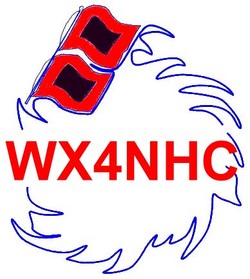 temperature, etc.) with any station in any location," Ripoll said.
temperature, etc.) with any station in any location," Ripoll said.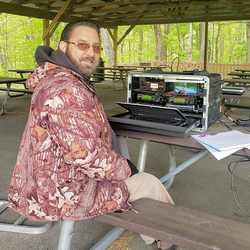
 pressing ham radio questions. You'll discover how to search ARRL's extensive Periodicals Archive, find helpful articles, read test reports, access technical forums, and find answers to technical questions beyond the Lab.
pressing ham radio questions. You'll discover how to search ARRL's extensive Periodicals Archive, find helpful articles, read test reports, access technical forums, and find answers to technical questions beyond the Lab.(1).jpg) weekend of specials
weekend of specials.jpg) engineering, arts, and math activities and to raise awareness of space communication, radio communication, space exploration, and related areas of study and career possibilities.
engineering, arts, and math activities and to raise awareness of space communication, radio communication, space exploration, and related areas of study and career possibilities.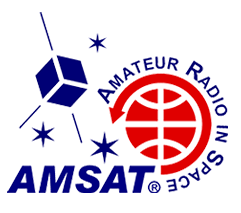 A valid nomination for Director must be in writing and requires either one AMSAT member-society or five individual members currently in good standing to nominate an AMSAT member. Written nominations, with the nominee's name, call sign, and contact information, as well as the nominators' names, call signs, and contact information, should be sent to AMSAT Secretary
A valid nomination for Director must be in writing and requires either one AMSAT member-society or five individual members currently in good standing to nominate an AMSAT member. Written nominations, with the nominee's name, call sign, and contact information, as well as the nominators' names, call signs, and contact information, should be sent to AMSAT Secretary .png) "The same troublemakers every month, the OTH-Rs [are] by far the most troublesome!" said IARUMS Coordinator Peter Jost, HB9CET, in the
"The same troublemakers every month, the OTH-Rs [are] by far the most troublesome!" said IARUMS Coordinator Peter Jost, HB9CET, in the 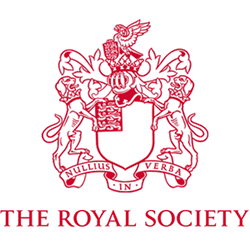 Prof. Hugh Griffiths, G4CNV, has been named as a fellow of The Royal Society. He is Royal Academy of Engineering / Thales Chair of RF Sensors, Department of Electronic and Electrical Engineering, University College London. Griffiths is the author of several papers and an active member of the Radio Society of Great Britain, and sits on the RSGB Examinations Audit Committee.
Prof. Hugh Griffiths, G4CNV, has been named as a fellow of The Royal Society. He is Royal Academy of Engineering / Thales Chair of RF Sensors, Department of Electronic and Electrical Engineering, University College London. Griffiths is the author of several papers and an active member of the Radio Society of Great Britain, and sits on the RSGB Examinations Audit Committee..jpg) The Intrepid-DX Group has announced that DXer Johannes Hafkenscheid, 5T5PA, is the recipient of the 2020 Intrepid Spirit Award. Hafkenscheid was very active while living and working in Mauritania throughout 2020. "This award is to recognize Johannes's outstanding efforts to activate Mauritania during the COVID-19 pandemic," the announcement said.
The Intrepid-DX Group has announced that DXer Johannes Hafkenscheid, 5T5PA, is the recipient of the 2020 Intrepid Spirit Award. Hafkenscheid was very active while living and working in Mauritania throughout 2020. "This award is to recognize Johannes's outstanding efforts to activate Mauritania during the COVID-19 pandemic," the announcement said. [This item corrects a news brief that appeared in the May 13 edition of The ARRL Letter.] The MIT UHF Repeater Association W1XM shack and radome have been saved. After a years-long process involving countless hours of meeting, writing, negotiating, and planning across half a dozen entities within MIT, and after an intense, large-scale fundraising campaign to save the shack and radome atop the Green Building Roof on campus, the club will get to keep and improve W1XM. A new radome will be installed around the 18-foot "big dish" on the roof. Helping in a big way to make this possible was a $1.6 million grant from Amateur Radio Digital Communications (
[This item corrects a news brief that appeared in the May 13 edition of The ARRL Letter.] The MIT UHF Repeater Association W1XM shack and radome have been saved. After a years-long process involving countless hours of meeting, writing, negotiating, and planning across half a dozen entities within MIT, and after an intense, large-scale fundraising campaign to save the shack and radome atop the Green Building Roof on campus, the club will get to keep and improve W1XM. A new radome will be installed around the 18-foot "big dish" on the roof. Helping in a big way to make this possible was a $1.6 million grant from Amateur Radio Digital Communications (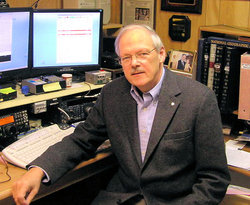
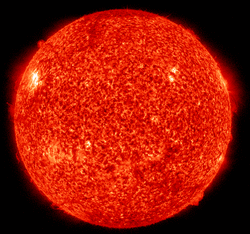 Average daily planetary A index changed from 9.1 to 6.6, and average daily middle latitude A index went from 7.4 to 6.3.
Average daily planetary A index changed from 9.1 to 6.6, and average daily middle latitude A index went from 7.4 to 6.3..jpg)








